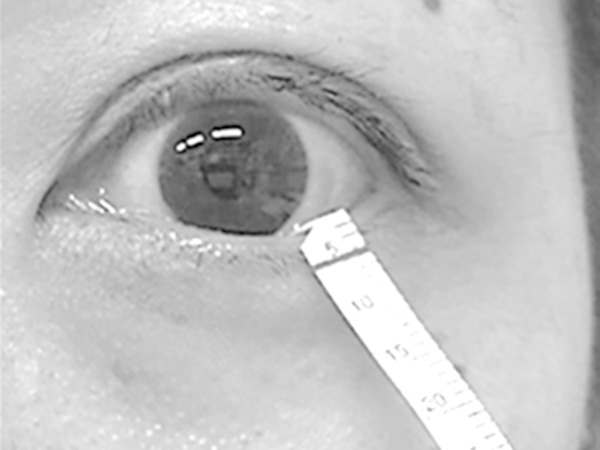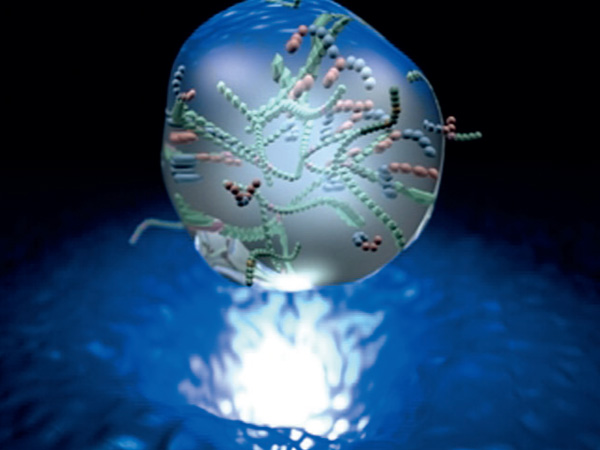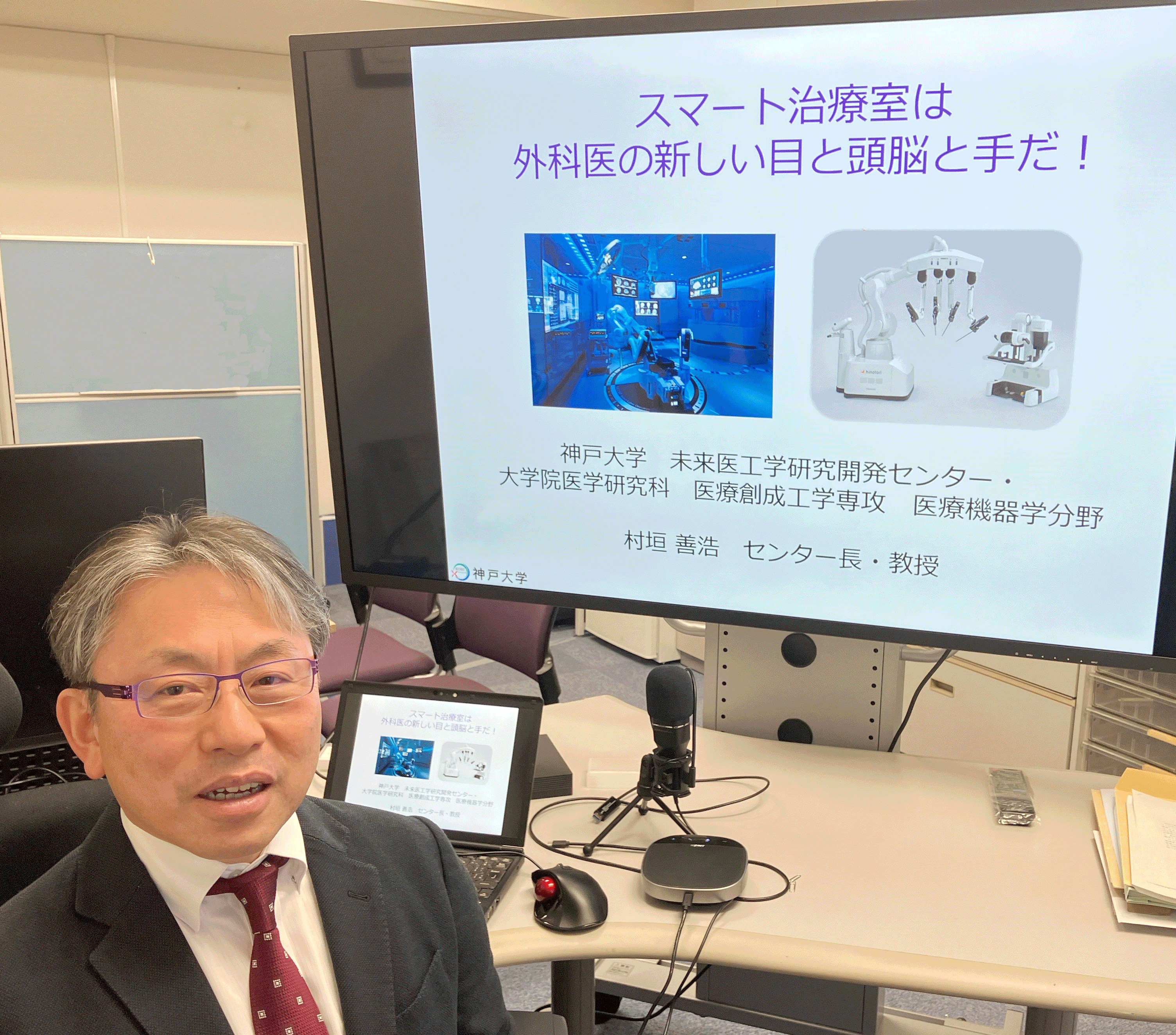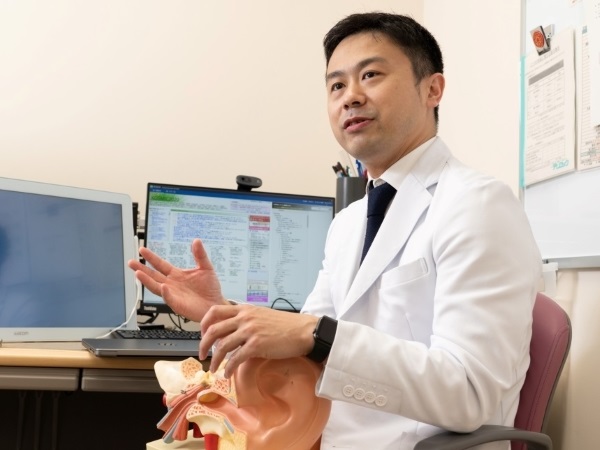There have been dramatic advances in the natural sciences thanks to inventions such as telescopes and microscopes that enable us to see things invisible to the naked eye. The arrival of X-ray photography, CT (computed tomography), and MRI (magnetic resonance imaging) has transformed healthcare, and the pioneers of CT and MRI both received Nobel Prizes. Professor Kenjiro Kimura has developed a technology that can produce 3D images of the inner structure of an object by applying waves (for example, radio waves) to the object and measuring the wave scattering.
He has recently drawn attention for advances in “microwave mammography” technology, a system that revolutionizes breast cancer screenings by visualizing the cancer to a high level of accuracy using very faint microwaves. He has also used magnetic fields to develop a system that visualizes abnormal electric currents in lithium-ion rechargeable batteries and the memory of advanced semiconductors. With research that pursues the science of visualization and a startup to ensure that their findings can benefit society at large, Professor Kimura and his team are contributing to the health and security of humanity.
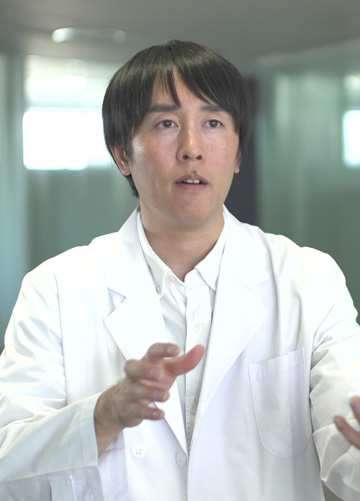
(Center for Mathematical and Data Sciences)
From small to big
Professor Kimura began his research career investigating the world of the infinitesimally small: as a graduate student and researcher at Kyoto University he observed the charge carrier density of semiconductors and DNA’s double helix structure. He was also involved in a national project to improve the spatial resolution of an atomic force microscope. Then in 2008 he moved to Kobe University and changed his research focus to visualization methods. Regarding this switch, Professor Kimura comments: “It’s natural for researchers to be interested in extreme things like ultra-small molecules and space, but we still didn’t understand anything about the inner structures of common objects in our everyday lives”.
Around this time, he received a request from a large electronics manufacturer in Kyoto: “We want you to make a nondestructive device for imaging electricity leakage from condensers”. Condensers are made from non-magnetic materials, so Professor Kimura decided to use a magnetic field. To tackle this problem, he solved the basic equation for static magnetic fields using calculations based on integral geometry. He succeeded in constructing a theory that visualized electric current at a much higher spatial resolution than existing detectors. At the same time he became the first in the world to solve the inverse problem that derives electric current from magnetic fields for objects such as condensers and batteries. Based on this research, he used magnetism to create a device for imaging electric current within the small condensers used in items such as mobile phones.
He visited small family-run factories in east Osaka, asking them to make cases to store his various components and devices. Looking back on this he remarks: “When they asked how many they should make and I replied ‘one’, they got angry with me”. Making single units wasn’t popular, but he secured the cooperation of a young businessperson open to new challenges, and together they made a device that could visualize the path of electric current priced at twenty to thirty million yen (twenty to thirty thousand USD) a unit.
The magnetism-based technology didn’t stop at condensers – it also bore fruit in a device that visualizes the internal electric currents of semiconductor circuits and lithium ion batteries. When the electric current shorts out in a lithium ion battery it can cause fires and explosions. At the startup established to apply Professor Kimura’s tech (more about this later), the combined sales of the device to visualize electric current paths and the nondestructive test for lithium ion batteries amount to roughly 1000 commissions a year.
A world first! Solving the inverse scattering problem
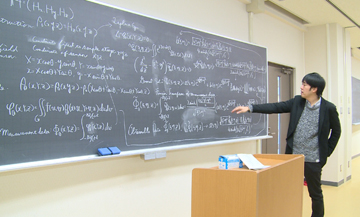
Professor Kimura had been interested in the theory of using wave scattering to visualize the inner structures of various materials since graduate school, and he challenged himself to solve an applied mathematics problem: the inverse scattering problem. Waves such as radio waves and sound waves scatter when they hit an obstacle, creating a similar effect to ripples on the surface of water. If you know the location and shape of the obstacle, you can calculate the scatter patterns by solving a basic physics equation (the forward problem). However, the inverse problem – calculating and visualizing the shape of an unknown object using the observed effects of wave scattering – is extremely difficult, and it is an unsolved problem in applied mathematics history. After considering this problem for ten years, Professor Kimura became the first person in the world to come up with a mathematical solution. He has now acquired a patent for the solution to the inverse scattering problem and the visualization device in nine countries.*
Based on this patent, his team collaborated with a large-scale manufacturer of infrastructure testing equipment to develop an instrument that can perform real-time detection (while the trains run) of minute fractures within the walls of the tunnels constructed during Japan’s period of rapid economic growth (mid-1950s to the early 1970s). Compared to the standard hammering tests, which had significant accuracy issues due to the low soundwave transmission capabilities of concrete, their equipment realized a dramatic improvement in accuracy and speed. This helped with the tunnel repairs, and contributed to improving the safety of Japan’s railway infrastructure.
Technology for health, safety and security
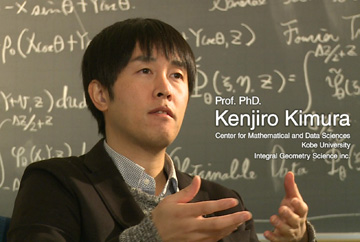
Professor Kimura’s next project was microwave mammography. Every year 1.67 million people contract breast cancer and 520,000 lose their lives to this disease. In standard X-ray mammography screenings, high-density tissue containing large quantities of collagen fiber all shows up white, making it impossible to detect cancerous cells. Ultrasound waves rapidly decay within breast tissue, so detections are not possible at any depth, and the signal-to-noise ratio is extremely poor. 60% of white women and 80% of Asian women under 50 have high breast density. In the US it is mandatory to report this, but other effective screening methods are not in place.
Women’s breasts consist of over 90% fatty tissue, and this fat is a good conductor of microwaves. Fat cells and cancer cells have very different values for “electric permittivity” – the degree of polarization when an electrical field is applied externally – and a large reflection occurs on the boundary between these tissue types. In other words, microwaves are an ideal probe to detect cancer within breast tissue. In 2013 Professor Kimura’s team created a trial screening device that uses microwaves. In 2015 their project received funding from the Japan Agency for Medical Research and Development (AMED) and they developed a prototype device for microwave mammography. They have used this to screen 350 people in clinical trials, with a cancer detection rate of almost 100%, achieving an outstanding performance among the global competition. The microwaves are weak, just 1/1000 the amount emitted by mobile phones, and the process is painless and non-invasive. Professor Kimura received the Japan Medical Research AMED Director Award and at the end of 2017 he received a commendation from the office of the Japanese prime minister.
Establishing a University-based startup
Professor Kimura has established a startup company to facilitate the social application of his research results: in 2012 he set up “Integral Geometry Science Inc.” (current capital 1254.2 million yen including reserves, 19 employees, and annual sales of 2-3 hundred million yen with steady profits). They have begun clinical trials of microwave mammography, and are aiming for a 2021 product release date. The company has received venture capital investment, and they plan to set up health check centers worldwide using microwave mammography.
He is currently developing a device that uses magnetism to reveal hidden weapons such as guns and blades. Magnetic fields can pass through concrete, so these devices can be installed out of sight within walls and roads. This enables a discrete check for hidden metal weapons and it could be used in anti-terrorism measures.
The company has already recorded sales of over 2 hundred million yen, and has attracted graduates including doctoral students from the University of Tokyo, Kyoto University, Kobe University and Tohoku University who want to test their skills in startups rather than large companies. The starting salary for these doctoral graduates is 2-3 times higher than standard graduate starting salaries. Whether it’s connecting research results to social impact, or finding beneficial and rewarding career paths for doctoral students, Professor Kimura’s work continues to reveal solutions for the problems facing Japan’s universities.
*Patent filed under “Scattering tomography method and scattering tomography device”





